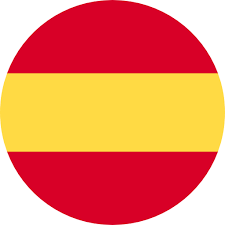By: Angelica Gonzalez Blanco, Immigration Practitioner in Canada
Canada’s immigration priorities for 2025–2026 have already been outlined in the new Departmental Plan from Immigration, Refugees and Citizenship Canada (IRCC). This plan is the roadmap that will guide immigration programs in the coming years, with a focus on attracting global talent, strengthening rural and francophone communities, and responding to Canada’s labor market needs.
As a licensed immigration practitioner, my goal is to help you understand these changes so you can anticipate, plan strategically, and increase your chances of success on your path to becoming a permanent resident of Canada.
Economic and Social Immigration: More Opportunities for Global Talent
IRCC continues to prioritize economic immigration to fill labor shortages in key sectors. If you have experience in high-demand occupations, your profile may have an advantage under programs such as Express Entry, Provincial Nominee Programs (PNP), and community pilots.
At the same time, there is a renewed focus on social integration, meaning more support for welcoming communities and policies that help newcomers transition smoothly into the Canadian labor market.
Transparency and Humanitarian Commitment
The plan reaffirms a commitment to clear processes, more predictable processing times, and maintaining humanitarian pathways for those seeking protection.
This is particularly relevant for refugee claimants and family reunification applicants, as greater transparency reduces uncertainty and allows for better planning.
Key Changes for International Students
LICO Adjustment:
As of September 1, the Low Income Cut-Off (LICO) for international students has increased by 11%, reaching $22,895 CAD. This ensures students have enough resources to support themselves without financial hardship. Before applying for a study permit, make sure you meet this updated financial requirement.
Francophone Student Pilots:
Starting in 2025, new pilot programs will attract students to francophone communities outside Quebec, offering incentives for those who want to live in bilingual environments and contribute to the vitality of these regions.
PGWP Updates:
The Post-Graduation Work Permit (PGWP) is being aligned with labor market needs. This means only certain programs of study will be eligible. In June 2025, the Canadian government updated its list based on the Classification of Instructional Programs (CIP), removing 178 programs no longer aligned with labor demand and adding 119 new fields of study focused on health, social services, education, engineering, IT, skilled trades, and transportation.
Express Entry 2025: Exclusive Draws for Francophones
A key change is the implementation of category-based Express Entry draws for francophone candidates.
Throughout 2025, four francophone-targeted draws were held. The most recent, on August 8, 2025, required a score of 481 CRS points and issued 2,500 invitations — a clear sign of Canada’s strategic push to attract francophone talent.
Rural and Francophone Community Pilots
Pilot programs remain an effective pathway to permanent residence if you are willing to live outside major cities:
Francophone Community Immigration Pilot (FCIP): Active and open. Requires a job offer from a designated employer in a participating community.
This is currently one of the most accessible routes to permanent residency for francophone candidates wishing to settle in smaller communities.
Legal Recommendations for 2026
📌 Stay updated on regulatory changes: LICO, PGWP eligibility, and spousal permits can significantly affect your strategy.
📌 Prepare your profile early: Have language tests, job offers, and supporting documents ready to apply when rounds or pilots open.
📌 Seek professional advice: A licensed representative can review your profile, recommend improvements, and guide you toward the program that best fits your situation.
Contrary to popular belief, Canada is not closing its doors to immigration. Instead, it is restructuring its system to attract individuals who have the right skills, qualifications, and profiles that align with the country’s needs.
Now more than ever, it is crucial to understand these immigration changes and design a strategy that matches your profile — so that your investment of time, resources, and effort truly brings you closer to achieving your goal of becoming a permanent resident of Canada.
📧 info@angelicagonzalezblanco.com



